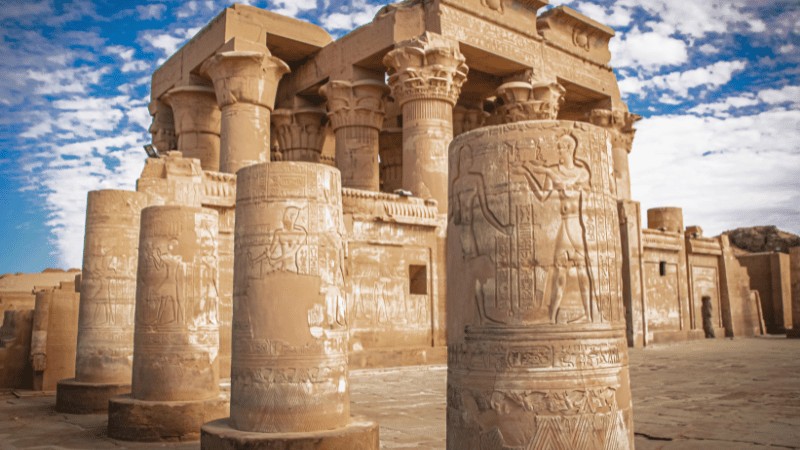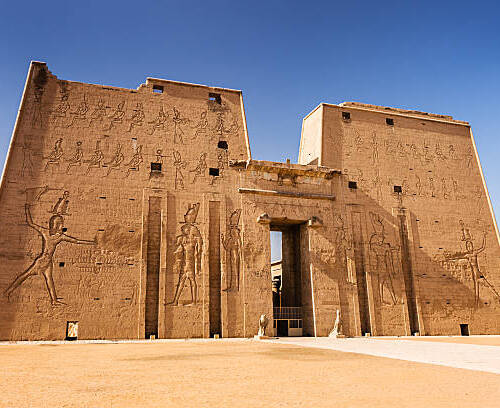No other nation in the world says ‘Welcome’ as often as the Egyptians, and every time, they mean it. While the ancient civilization of Egypt continues to amaze, contemporary Egyptians are equally remarkable.
Esna Travel Guide
Esna: Unveiling the Hidden Jewels of Egypt's Past
Nestled just 60 kilometers to the south of Luxor lies the unassuming yet historically rich town of Esna. While it may not immediately catch the eye of travelers, this small farming community holds hidden treasures and tales that beckon exploration. The primary attraction that lures visitors to Esna is the remarkable Temple of Khnum, a Greco-Roman masterpiece that stands as a testament to ancient Egyptian heritage.
The Temple of Khnum itself is a marvel to behold. It was painstakingly constructed to emulate a far older monument built by the illustrious Tuthmosis III during the reign of the 18th dynasty in Egypt. This architectural gem, nestled on the west bank of the majestic Nile, is the town’s crowning jewel. But do not let the modest facade of Esna deceive you; it holds its own charm and allure.
Wandering beyond the temple, you’ll discover a quaint bazaar offering an array of tourist souvenirs. As you explore further, the town reveals its architectural treasures from the 19th century, adorned with intricate mashrabiyya, or wooden lattice screens. Just north of the temple lies the Wekalat al-Gedawi, a once-thriving Ottoman caravanserai that has since fallen into disrepair. It was once the vibrant commercial hub of Esna, where merchants from Sudan, Somalia, and central Africa gathered on the second floor, while a bustling market thrived in the courtyard, boasting Berber baskets, Arab glue, ostrich feathers, and even elephant tusks.
Across from the temple stands the Emari minaret, a relic from the Fatimid period and one of Egypt’s oldest. Remarkably, it managed to evade destruction during the mosque’s demolition in 1960. In the covered souq to the south of the temple, an ancient oil mill grinds lettuce seeds into oil—an elixir with a potent reputation as an aphrodisiac since time immemorial.
Esna’s historical significance stretches back to the early 20th century when it served as a vital stopover on the camel-caravan route between Sudan and Cairo, as well as between the Western Desert Oases and the Nile Valley. Today, it is renowned for the Esna locks on the Nile, where cruise boats patiently queue up to navigate this essential waterway.
Visiting Esna makes for a delightful morning excursion from Luxor or a captivating stopover on the journey from Luxor to Aswan. The tourist police office can be found in the tourist souq near the temple, and for a taste of local life, don’t miss the bustling souq, especially vibrant on Mondays, situated beside the canal.
Esna, a town that may initially appear unassuming, offers a rich tapestry of history, culture, and charm waiting to be unraveled by the discerning traveler. It is a place where the past and present harmoniously coexist, inviting you to explore its hidden treasures and experience the allure of its ancient mysteries.

Aswan Private Day Tours
El Kab and Esna Temple Day Tour from Aswan

Aswan Private Day Tours
Kom-Ombo & Edfu Temples Day Tour
Created On March 18, 2020
Updated On Aug , 2024



